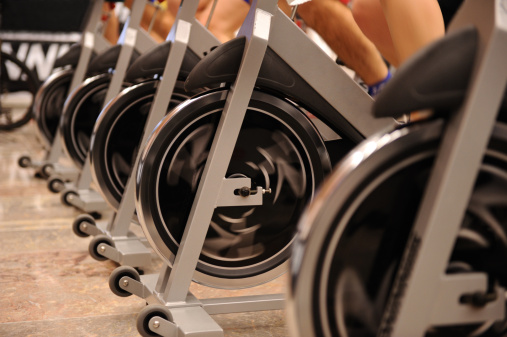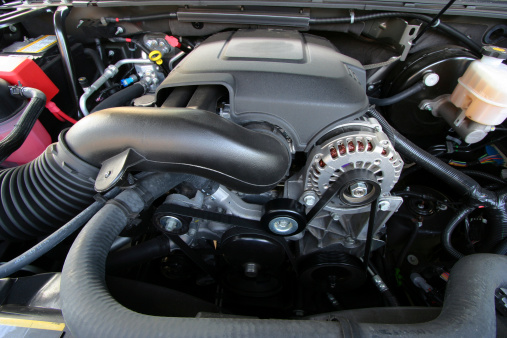We’ll look at an example of mechanical to electrical energy transfer in this topic.
- Turbine generator
- Peloton wheels
- Generator
- Piezoelectric transducers
- Alternator in cars
- Hydroelectric power plants
Turbine generator
In a turbine generator, a flowing fluid—water, heat, burning gases, or air—pushes a series of blades on a driving axis. A generator’s driving axis is turned by the fluid pushing against the edges. The generator transforms the rotor’s physical (kinetic) power into electrical power. Turbines include steam turbines, flammable (gas) rotors, hydrological turbines, and wind turbines.
Peloton wheels
The Pelton turbine has simple operating principle simple operating principles. Whenever a high-velocity water jet fed by a nozzle collides with the bowls of a Pelton wheel, an impulsive force is produced. As a consequence of this pressure, the turbine turns. A generator is powered by the revolving shaft, which generates electricity. In a nutshell, the Pelton turbine converts the kinetic energy of a water jet into rotational energy.
Generator
If the machine converts mechanical action to electricity using changing magnetic fields and wire bundles, we can call it a generator. Generators are available in a range of sizes and forms. Stationary coils and whirling magnetic fields, as well as fixed coils and whirling magnetic fields. Linear generators have coils and magnets that travel back and forth in a straight line.
To create DC current, some generators utilize commutators and brushes, while others use slide rings to remove the AC. Others correct AC current to DC current using electrical devices such as diodes. Some produce AC current and are referred to as alternators. Electrostatic generators are also available, which produce extremely strong static electrical voltages.
They may employ falling liquid, rubber belting, or tiny conductive plate pieces embedded in insulators. Then there are piezoelectric generators, which create an electrical charge by applying physical stress on a stone. A classic illustration is a gasoline grill igniter.
Piezoelectric transducers
Piezoelectric transducers use their straight piezoelectric effect to transfer mechanical power into electrical power, or their inverse piezoelectric effect to turn electrical power into mechanical power generation. A Piezoelectric Transducer’s operating concept is founded on the concept that potential is formed all across surfaces of a piezoelectric crystal when a physical force is imparted to it. As a result, mechanical events become electrical signals.
Alternator in cars
A car’s alternator is a good illustration of mechanical to electrical energy conversion. It is driven by your engine, which rotates a dynamo that charges your batteries and powers all of the electricity in your vehicle, via a rope from the crank.
Hydroelectric power plants
At hydroelectric energy stations, alternators are employed. They’re connected to a water turbine. The force of the water propels the water turbine. The water’s potential power is turned into rotational power by lowering the turbine’s rotors from a set height, causing the turbine to revolve. The turbine shaft is linked to the alternator shafts, thus the alternator turns while the turbine spins side by side.
Electrical energy is created within the alternator using electromagnetic concepts and then delivered from the power depot to the transformer through transmission lines. The term “generator” is a misconception since it simply transforms one kind of power into another, not creating energy. If it is provided with electrical power, the same device may be utilized as a drive that converts electrical power into physical power. An alternator is another name for a generator.
Frequently asked questions | FAQs
Ques. What is an illustration of mechanical power being converted to electric power?
Ans. Wind turbines, peloton wheels, and rotary turbines are just a few types of mechanical energy conversion devices. Step-by-step solution: The principle of faraday’s principles of electromagnetism is used to convert mechanical power into electricity.
Mechanical forms of energies such as rotational power, kinetic power, and potential energy are commonly encountered in energy conversions. Wind turbines, peloton wheels, and rotary turbines are just a few types of mechanical-to-electrical energy conversion devices. Faraday’s principles, an electromagnetic concept, are used to convert mechanical power to electrical power.
When a coil is moved in a uniform magnetic field, a current is generated in the loop in the reverse way to balance out the flux. An electric generator is a name given to the gadget that operates on this basis.
Ques. Is it possible to transform mechanical energy into thermal energy?
Ans. Heat might be converted to mechanical power, and mechanical power can be converted back to heat. A key physics discovery is the mechanical analogue of energy. This indicates that one may affect a system’s inner energy by either executing action on it or introducing heat to it.
Ques. Is it possible to transform mechanical energy into thermal energy?
Ans. Heat might be converted to mechanical power, and mechanical power might be converted back to heat. A key physics discovery is the physical equivalent of heat. This indicates that one may affect a system’s inner energy by either executing action on it or introducing heat to it.
Ques. Which are the three different kinds of mechanical energy?
Ans. Mechanical power includes potential power, kinetic power, and spring power. Additional types of energy include sound and light, to name a few. For example, nuclear power is a type of mass energy.
Ques. What are the several forms of energy?
Ans. The six major forms of energy are chemical, electric, radiant, physical, heat, and nuclear. Further kinds, such as electrochemical, acoustic, electromagnetic, and others, maybe discussed in other studies. Many other forms, on the other hand, are mixtures of these six fundamental kinds.
Also Read:
- Example of potential energy to mechanical energy
- Mechanical energy to chemical energy
- Chemical energy to light energy
- Elastic potential energy examples
- Is kinetic energy conserved in an elastic collision
- Example of radiant energy to thermal energy
- Example of kinetic to sound energy
- Example of kinetic to thermal energy
- Example of potential energy to thermal energy
- Chemical energy to sound energy
I am Sakshi Sharma, I have completed my post-graduation in applied physics. I like to explore in different areas and article writing is one of them. In my articles, I try to present physics in most understanding manner for the readers.




